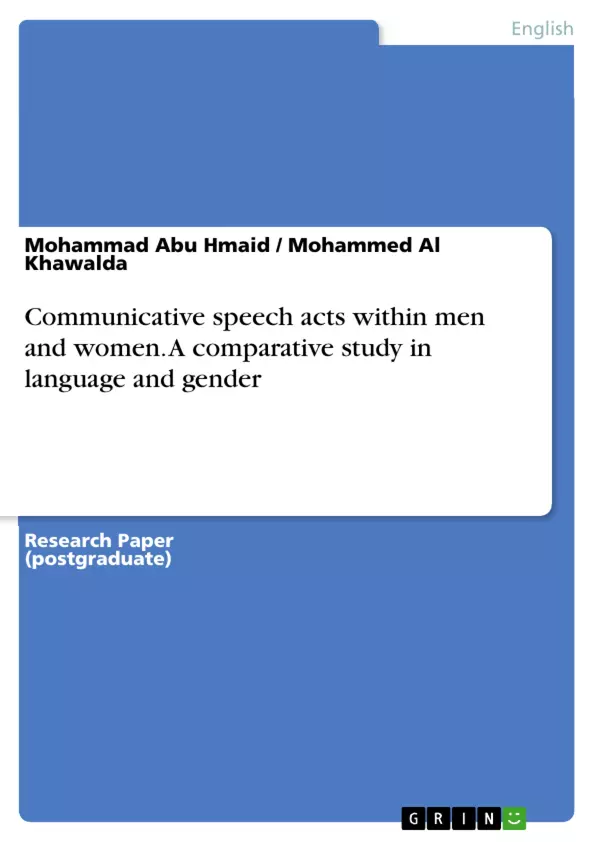This paper investigates the vibrant area in the observed application of language and gender in our speech communities highlighting the comparative differences which have crystallized communicative speech acts within men and women. The qualitative data was achieved through questionnaire survey. The sample of the study consisted of 50 males and females which they were selected randomly. The collected data was analyzed using SPSS program. The findings of the study revealed that, language and gender is a common phenomenon in various communities highlighting interesting differences in communication behaviors between men and women, spotting the relationship between language and our perspective about men and women and withstanding commonly articulated views on language and gender. This study recommends that similar investigations and studies be conducted serving as a point of departure towards further investigation and studies on language and gender.
Table of Contents
- Introduction
- The objectives of the study:
- to highlight the comparative differences which have crystallized communicative speech acts within men and women.
- to supply up-to-date and reflective picture of language and gender for students and researchers in a variety range of discipline
- to observe data and case studies in the interactions within different speech acts and communication behaviours in gender in social contexts.
- to draw distinction lines behind the reasons why particular gender use specific speech (reasoning why men and women talk this way).
- The research questions:
- Review of Literature
Objectives and Key Themes
This research aims to explore the differences in language use between men and women, highlighting the communicative speech acts that characterize their interactions. The study seeks to provide a comprehensive overview of language and gender, offering insights for students and researchers in various disciplines. Through analyzing data and case studies, the paper aims to understand the factors influencing these communication differences and explore the cultural, educational, traditional, and biological/psychological aspects that contribute to them.
- Comparative differences in communication behaviours between men and women.
- The role of gender in shaping linguistic patterns and communicative styles.
- The influence of culture, education, and social factors on language and gender dynamics.
- The relationship between language and our perceptions of masculinity and femininity.
- The impact of gender on communication in various social contexts.
Chapter Summaries
The introduction provides an overview of the concept of language and gender, highlighting the sociolinguistic phenomena observed in interpersonal communication between men and women. It discusses the multifaceted nature of gender, emphasizing its role in social relationships, linguistic representations, and social identities.
The objectives of the study outline the research aims, including highlighting the comparative differences in communicative speech acts between men and women, providing a comprehensive understanding of language and gender, analyzing data and case studies, and exploring the reasons behind gender-specific speech patterns.
The research questions delve into the key areas of investigation, examining the extent of variation in speech behaviours related to language and gender, exploring the observable differences in communicative acts based on gender, investigating the roles of culture, education, traditions, and biology/psychology in shaping these differences, and prompting reflection on the relationship between language and culture.
The review of literature examines previous research on language and gender, focusing on key contributions from scholars such as Lakoff (1975), Coats (1998), and others. It discusses the "Deficit" model, which views women's language as inferior to men's language, and its subsequent criticisms. The review also highlights alternative perspectives that emphasize the distinct, rather than deficient, nature of women's communication styles.
Keywords
The key terms and concepts explored in this paper include gender, language, communication differences, communicative speech acts, sociolinguistics, cultural factors, educational influences, traditional norms, biological and psychological perspectives, and social contexts. The study examines the relationship between language and gender in various speech communities, highlighting the variations in communicative styles and behaviors between men and women.
- Quote paper
- Mohammad Abu Hmaid (Author), Dr. Mohammed Al Khawalda (Author), 2014, Communicative speech acts within men and women. A comparative study in language and gender, Munich, GRIN Verlag, https://www.grin.com/document/285034



